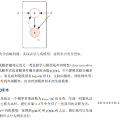In various models of one-way pushdown automata, the explicit use of two designated endmarkers on a read-once input tape has proven to be extremely useful for making a conscious, final decision on the acceptance/rejection of each input word right after reading the right endmarker. With no endmarkers, by contrast, a machine must constantly stay in either accepting or rejecting states at any moment since it never notices the end of the input instance. This situation, however, helps us analyze the behavior of the machine whose tape head makes the consecutive moves on all prefixes of a given extremely long input word. Since those two machine formulations have their own advantages, it is natural to ask whether the endmarkers are truly necessary to correctly recognize languages. In the deterministic and nondeterministic models, it is well-known that the endmarkers are removable without changing the acceptance criteria of each input instance. This paper proves that, for a more general model of one-way probabilistic pushdown automata, the endmarkers are also removable. This is proven by employing probabilistic transformations from an "endmarker" machine to an equivalent "no-endmarker" machine at the cost of double exponential state complexity without compromising its error probability. By setting this error probability appropriately, our proof also provides an alternative proof to both the deterministic and the nondeterministic models as well.
翻译:在单向推下自动磁带的各种模型中,在读取后输入磁带上明确使用两个指定的标记符已证明非常有助于在读取右页标记后对每个输入单词的接受/拒绝作出有意识的最后决定。 相比之下,在没有标记符的情况下, 机器必须随时在接受或拒绝状态中停留, 因为从未注意到输入实例的结尾。 然而, 这一情况有助于我们分析磁带头在给定的极长输入单词的所有前缀上连续移动的机器的行为。 由于这两种机器的配方本身具有优势, 自然地会问这些标记符是否真正有必要正确识别语言。 在确定性和非确定性模型中, 众所周知, 最终标记符可以在不改变每个输入实例的接受标准的情况下随时被重复。 但是, 本文证明, 对于一个更一般的单向概率推低的自动图模型, 最终标记也是可以重现的。 通过使用预设的概率模型来证明, 一种不比喻性机的精确性模型, 从“ 确定性概率性模型” 提供一种“ 的精确性模型的精确性模型, 从一个“ 的精确性模型到一个“ 的精确性模型” 到一个“ 的精确性模型的精确性模型的精确性模型,, 提供一种“ 的精确性模型的精确性模型的精确性模型, 的精确性模型的精确性模型” 的精确性模型, 证明。




